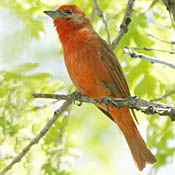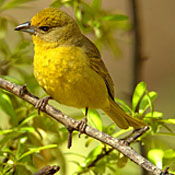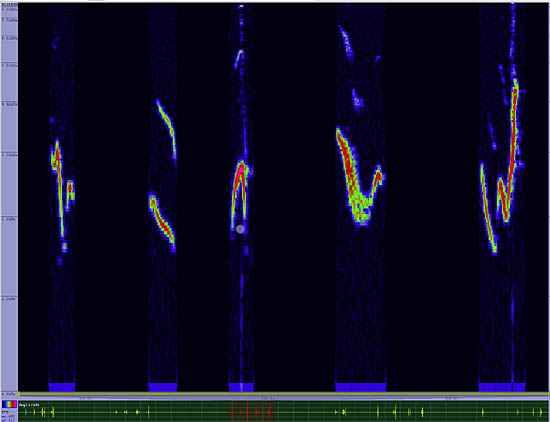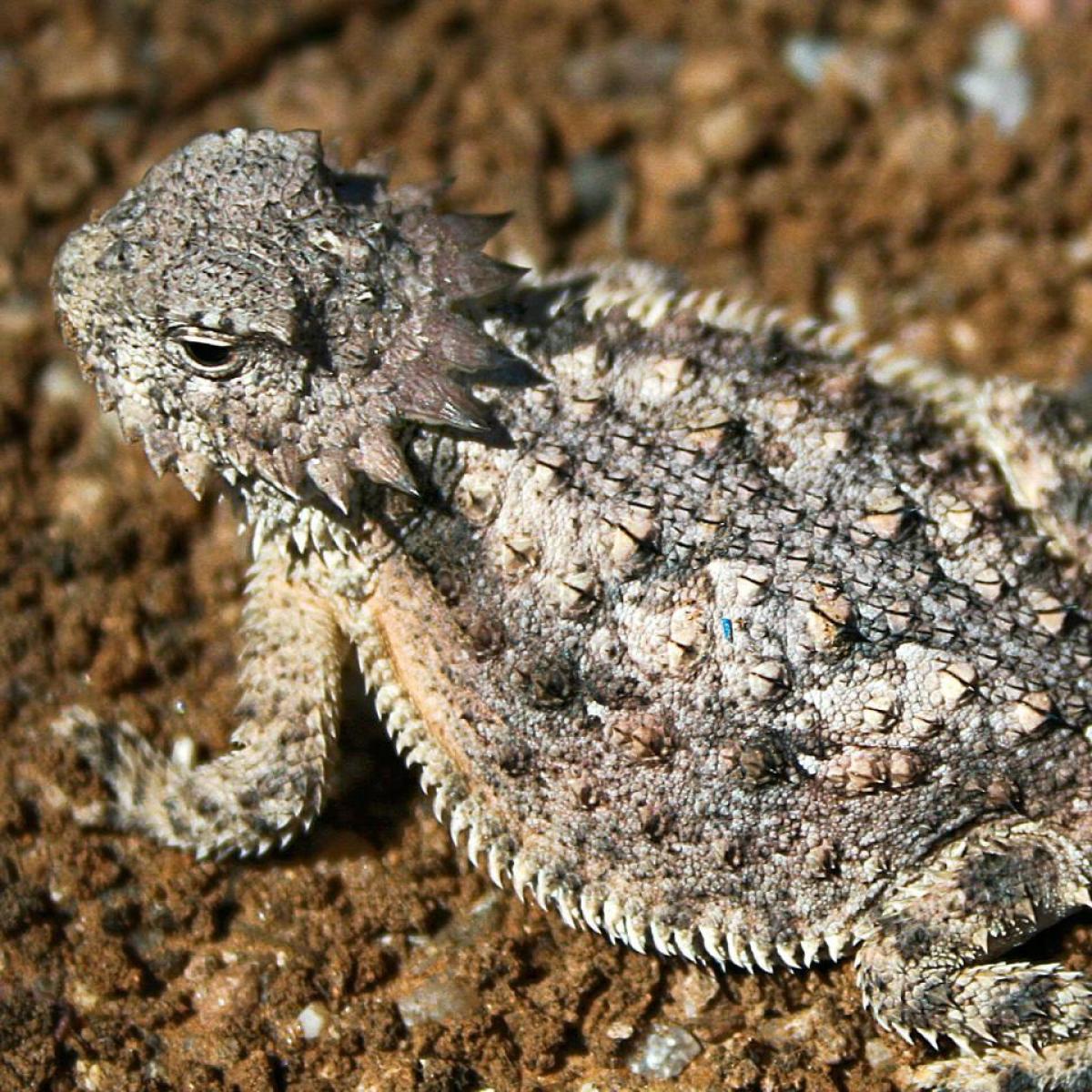Hepatic Tanager
Piranga flava

Perching

Length: 8 in. (20 cm )
Nesting in mountainous pine and oak woodlands, the Hepatic Tanager stays high in the tree crowns. Here it gleans and flies out to catch insects from the vegetation but in the later summer includes more fruits in its diet. The nest is made of loose grass and moss and placed high on a horizontal branch.
The four-digit banding code is HETA.
Bibliographic details:
- Article: Hepatic Tanager
- Author(s): Dr. Biology
- Publisher: Arizona State University School of Life Sciences Ask A Biologist
- Site name: ASU - Ask A Biologist
- Date published:
- Date accessed:
- Link: https://askabiologist.asu.edu/activities/bird/hepatic-tanager
APA Style
Dr. Biology. (). Hepatic Tanager. ASU - Ask A Biologist. Retrieved from https://askabiologist.asu.edu/activities/bird/hepatic-tanager
Chicago Manual of Style
Dr. Biology. "Hepatic Tanager". ASU - Ask A Biologist. . https://askabiologist.asu.edu/activities/bird/hepatic-tanager
Dr. Biology. "Hepatic Tanager". ASU - Ask A Biologist. . ASU - Ask A Biologist, Web. https://askabiologist.asu.edu/activities/bird/hepatic-tanager
MLA 2017 Style
Be Part of
Ask A Biologist
By volunteering, or simply sending us feedback on the site. Scientists, teachers, writers, illustrators, and translators are all important to the program. If you are interested in helping with the website we have a Volunteers page to get the process started.






